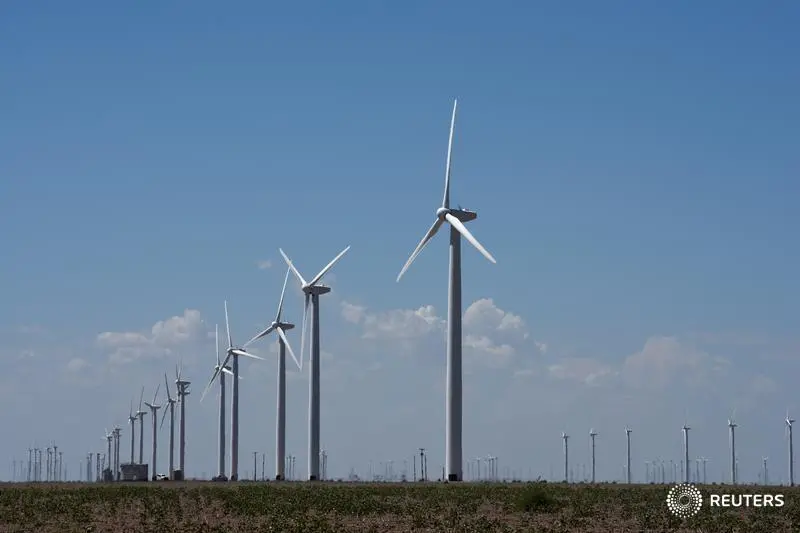PHOTO
(The opinions expressed here are those of the author, a columnist for Reuters.)
LITTLETON, Colorado - After months of low wind speeds in several key wind farm areas, U.S. wind power generation hit its highest levels in nearly five months in early September as wind speeds picked up.
Unusually low wind speeds caused U.S. wind generation to slump by more than 4.5% over the first eight months of 2023 from the same period in 2022, according to data compiled by LSEG.
That drop in wind generation came despite new additions to wind supply capacity throughout the country, and forced several major utilities, including in top power market Texas, to offset lower wind generation with higher natural gas-fired output as they tried to keep up with increases in electricity demand.
But with wind speeds now starting to pick up into the fall and winter months - when wind speeds typically near their highest for the year - utilities may be able to deploy more wind power across electric grids and potentially dial back power generation from fossil fuel sources.
STATE LEADERS AND LAGGARDS
Of the six largest wind power producing states - Texas, Iowa, Oklahoma, Kansas, Illinois and North Dakota - only Texas managed to generate more electricity from wind sites in January through May 2023 compared to the same period in 2022, data from think thank Ember shows.
The remaining states recorded an average wind generation drop of 7.1%, which contributed to a 3.1% decline in total national wind generation in the January to May period.
The shortfalls in wind power have been evident in the output data of major U.S. power pool markets.
The Electric Reliability Council of Texas (ERCOT), the Midcontinent Independent System Operator (MISO), and the Southwest power pool recorded wind power drops of 2.3%, 8.9% and 1.3% respectively in the first eight months of 2023 from the same period in 2022, LSEG data shows.
As these markets cover over 30 U.S. states as well as the areas with the largest concentrations in wind power generation in the United States, the declines in wind power in these power pools had a direct impact on national level wind output, with knock-on effects for power generation mixes across the country.
Similarly, any sustained recoveries in wind power generation totals from these key areas will lead to a commensurate rebound in U.S. power generation totals, and may allow for utilities to pare back use of natural gas and other sources of power to make way for more non-emitting wind power supplies.
EL NINO IMPACT
The key factor behind the below-average wind speeds in 2023 has been the El Nino weather pattern that has led to a warming in Pacific Ocean water temperatures, lower pressure in subtropical areas and a slowing in the trade winds across the United States.
Average U.S. wind speeds in key wind power generation areas were between 1 and 3 meters per second below the long term average in May of 2023, according to an analysis by Climate Impact Company using data from the National Oceanic and Atmospheric Administration (NOAA).
The U.S.' Climate Prediction Center says there is a greater than 95% chance of an El Nino weather pattern holding through the remainder of 2023 and into 2024, which historically would suggest that overall wind speeds would remain below normal during that period.
However, there is a strong seasonal tendency for wind speeds to pick up during the fall and winter months from the relatively low levels typically seen over the northern hemisphere summer.
Wind generation data across key states confirms the impact of this seasonal pick up in wind speeds, with monthly power output usually peaking in the winter and spring and hitting annual lows during summer.
This year, the same swing from lower to higher wind speeds may be already underway, and even if average speeds do not reach previous peaks due to El Nino, they should still help generate more wind power across the United States than seen in recent months.
The opinions expressed here are those of the author, a columnist for Reuters.
(Reporting By Gavin Maguire; Editing by Shri Navaratnam)























